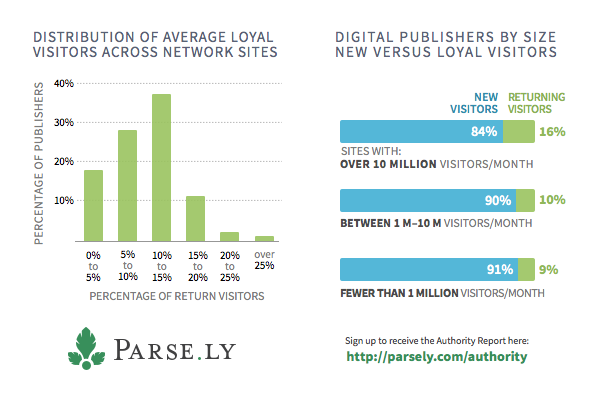Speaking Different Languages: Separating Ad Measurement vs Audience Insights in the Attention Debate
This essay is a reposted response from Parse.ly’s CEO, Sachin Kamdar as part of a debate on Attention Minutes over at The Media Impact Project.
A frank conversation on the value of attention minutes/engaged time is long-overdue. Richard Tofel kicked it off by questioning “the panacea some have suggested that [engaged time] might be.” And rightly so — spending months and years dedicated to chasing anything without questioning its value won’t end well for anyone.
In responses from Jonathan Stray, Daniel Mintz, Tony Haile and Anthony Hitchings, they all agree on something: that attention or engaged time should not be the only metric publishers use to evaluate content.
Journalism is very much a multi-stakeholder endeavor, so why should we imagine that a single number can capture all aspects of the activity?
– Jonathan Stray, Overview Project
However, all the writers also agree, including Tofel, that attention minutes have some value, and meet needs that page views or visitors can leave lacking. If this is the case, then the question isn’t, “Should we be using attention as a metric?”, the conversation we need to be having is, “What is that value of attention and how should publishers apply it to their operations?”
Jonathan Stray also points out something, that though discussed, too often gets ignored when discussing metrics, that there are three goals of any digital publisher: the sustainability of the business, the effectiveness of the advertising and the impact on the audience. Sustainability has been, and most likely always will be measured in dollars (or bitcoins!). However, both advertising and audience have been traditionally measured the same way, in page views.
The assumption that seems to underlie most of these conversations is that measuring attention will have the same value for measuring advertising and understanding audience impact, when in fact it would benefit everyone to separate the two.
Attention as a metric in this sense has value for advertisers; it is a measurement that can be reported on and fulfills their needs. It provides a more accurate picture of the interaction with their target audience and their ad, and doesn’t require a click to be effective. Advertisers don’t care about content or context, as long as they’re seeing results.
Wil Harris, the digital director at Vogue spoke to this directly in an interview for The Media Briefing: “There is a big problem with the perception of direct response on the web. If you look at cars for instance, the logical expansion of direct response is ‘I’m going to go on, want that car, click that advert. But nobody is going to click and spend £10,000 that way… In terms of these showing the effectiveness in advertising, we have to get away from the click.”
Attention metrics undoubtedly help solve this challenge.
When it comes to the value of attention from an audience perspective though, the same doesn’t hold true. As with many other truths in business, it’s not as sexy (or as easy) to propose that we don’t have the solution yet; that there isn’t one metric to “rule them all.” But admitting that means we can start to create smarter publishing models by including attention among a variety of metrics that indicate audience trends.
Allowing newsrooms, editors and journalists to connect the correct goals of each piece or each publication to the right metrics will allow the industry to understand how analytics benefit readers and publishers.
Tofel gives an example of this, saying that attention can be a more helpful gauge in explanatory journalism, where the goal of a piece is to explain a concept. He contrasts this with his time at the WSJ, where subscriptions indicated if editorial was creating key stories that readers would pay for. Mintz describes attention minutes as the missing piece between the “input” metrics of page views and visitors, and the “output” metric of shares, allowing Upworthy to evaluate the entire “lifespan” of a reader’s journey through their content.
And beyond what the metrics, inputs and outputs tell us about the work created, what are we learning about our readers? Can we tell whether they’re getting any value out of the piece they’re reading?
Consider return visits as a signal that a reader has found value, regardless of the number of page views or the amount of attention.
We have found a correlation between returning visitors and the size of a publisher’s site, indicating that these sites may have seen growth and success by doing a better job of understanding their audiences and providing them value. (See our full report on it here: Parse.ly’s Authority Report).
So while using attention to provide advertisers metrics that communicates the value of their investment better can only benefit all of us, understanding the audience will always be more nuanced than any quick ROI calculation you can perform.
See more responses to this topic at The Fray.

